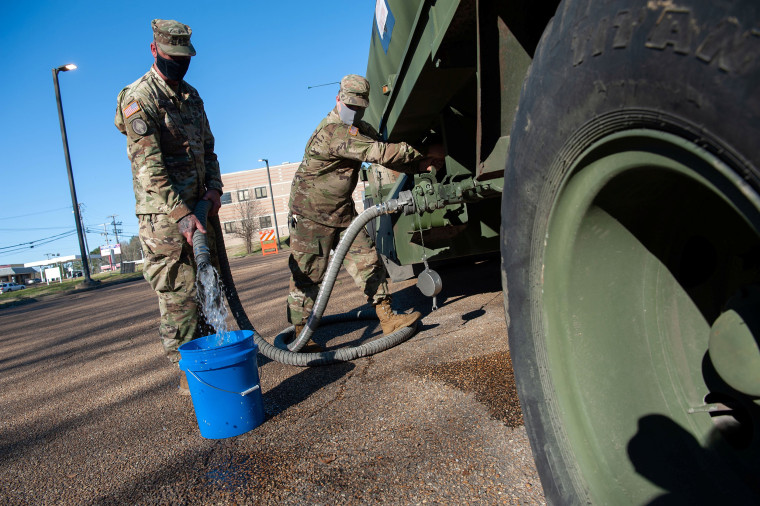WASHINGTON — The first major infusion of federal cash from the bipartisan infrastructure law is on its way to states to overhaul the country's aging water infrastructure and dangerous lead pipes.
The Biden administration announced Thursday that the Environmental Protection Agency will distribute $7.4 billion to states, tribes and territories for 2022 focused on water infrastructure grants and loan forgiveness. The funding is part of a broader $50 billion investment in water infrastructure from the infrastructure law, which will be doled out over five years.
EPA Administrator Michael Regan said in an interview that it is the "single largest investment in water infrastructure" in the history of the federal government.
"This law's investment in water is nothing short of transformational," Regan said. "We're less than three weeks post the president signing this, and we're hitting the ground running."
The money includes $2.9 billion specifically earmarked to replace lead pipes — President Joe Biden has promised that every remaining lead pipe in the country will be eliminated under the deal. Another $866 million will be designated to deal with "forever chemicals" and other water contaminants that threaten the drinking water supply, the EPA said.
After months of hard-fought congressional negotiations, Biden last month signed into law the $1.2 trillion infrastructure deal, which includes $550 billion in new investments, such as pipes and pollution remediation.
Explaining to the public exactly how it will benefit from the far-reaching deal has been a challenge for the Biden administration, which deployed the president to a crumbling bridge in New Hampshire last month and to a technical college in Minnesota on Tuesday to call attention to how individual communities could benefit.
Regan pointed to raw sewage backups in Detroit and hundreds of thousands of lead pipes that service homes and schools in Chicago as examples of urgent water infrastructure needs that would benefit from new federal funding.
"When I think about communities like Jackson, Mississippi, and I'm having conversations with 8- and 9-year-olds who are frustrated that they have to evacuate their school because their schools' water infrastructure is inadequate, obviously, your heart goes out," he said.
The Biden administration has only limited say in how the money gets spent. Some of the funding will flow through federal grants, which the administration can issue to specific projects. But the majority of the dollars will be distributed to states, which will ultimately decide what projects they want to fund.
That has created a challenge for the administration to ensure that the money is spent in a way that meets its goals, such as focusing funds on underserved and disadvantaged communities, rather than on other priorities that states may have.
In a letter being sent to governors Thursday and obtained by NBC News, Regan said the federal government and the states "share the same goals" and implored them to focus their share of funds on low-income, disadvantaged and minority communities.
"The agency strongly urges states to maximize the potential to remove barriers and prioritize the distribution of grant funds to disadvantaged communities," Regan wrote. "It is a top priority for the EPA to ensure communities that have historically struggled to access ... funding are prioritized."



